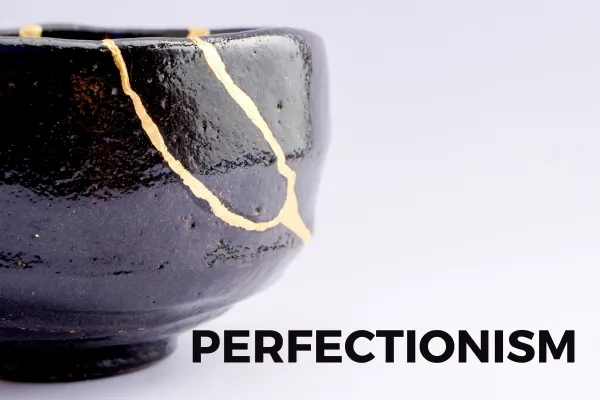Welcome to the
Radiant Performance Coaching Blog!

Breaking Free From Perfectionism
“The world breaks everyone, and afterward, some are strong at the broken places."
- Ernest Hemingway
In the contemporary, hyper-paced world of technology, it's easy to get caught in the relentless pursuit of perfection. I know it. I have lived it. As an executive, you're continually under pressure to innovate, optimize, and, above all, perfect your product, strategy, or team. But what if the most transformative progress wasn't in striving for flawlessness but in embracing imperfection?
Let's travel eastward and draw wisdom from a centuries-old Japanese art – Kintsugi. In this art form, broken pottery is not discarded or concealed. Instead, it's repaired with lacquer mixed with powdered gold, silver, or platinum. The cracks, rather than being hidden, are illuminated, celebrated even. This philosophy doesn't just find beauty in brokenness but believes that an object becomes more valuable because it has a history, scars, and imperfections.
1. The Paralysis of Perfectionism
In the tech world, aiming for perfection can often lead to paralysis. There's always one more bug to fix, one more feature to add, or one more strategy to optimize. There is always the temptation to do a great job, on an unimportant activity. Bring your “A” game, all the time, they say. By the time you believe it's 'perfect', the industry has shifted, and what was once innovative is now obsolete. Perfectionism can stifle innovation and risk-taking.
2. Embrace the Cracks
Each bug, each setback, each failure is a crack in your professional 'pottery'. But just as in Kintsugi, these cracks can be golden opportunities. They are chances to learn, grow, and innovate. They tell the story of your journey, of resilience and innovation. When you embrace these imperfections, you unlock creativity, agility, and authenticity that a flawless facade can never achieve.
3. Mending with Gold
So, how do you mend these cracks with gold? Start by acknowledging them. Create a culture where failures are seen not as setbacks but as stepping stones. Foster a space where your team is not afraid to voice their mistakes, knowing that they'll be used as learning points and not punitive measures. Recognize the value in iteration and continuous improvement.
4. The Beauty of Wholeness
True perfection is not about being without flaws but about being whole. Just as Kintsugi doesn't aim to make the pottery as it was but to acknowledge and celebrate its journey, transformative leadership in tech recognizes that each challenge, each 'imperfection', contributes to the holistic beauty of the journey. Your scars, your stories, your setbacks—they all add value. They make you, your product, and your team uniquely beautiful.
5. The Transformative Power of Embracing Imperfections
The tech world is continually evolving. Instead of aiming for a static state of 'perfection', aim for growth, evolution, and adaptability. Remember, in the words of Leonard Cohen, "There is a crack in everything. That's how the light gets in."
As technology executives, when you shift from the weight of perfectionism to the freedom of embracing and celebrating imperfections, you're not just leading a team or a product. You're crafting a legacy, a testament to the transformative power of imperfection, resilience, and innovation. And that is a narrative far more compelling and impactful than any illusion of perfection.
By reimagining our understanding of perfection and imperfection, especially in the relentless world of technology, we can achieve a more authentic, agile, and innovative approach to leadership and product development. Let the Japanese art of Kintsugi serve as a reminder that there's profound beauty and strength in our imperfections. Embrace them, mend them with gold, and watch as your unique story unfolds.
